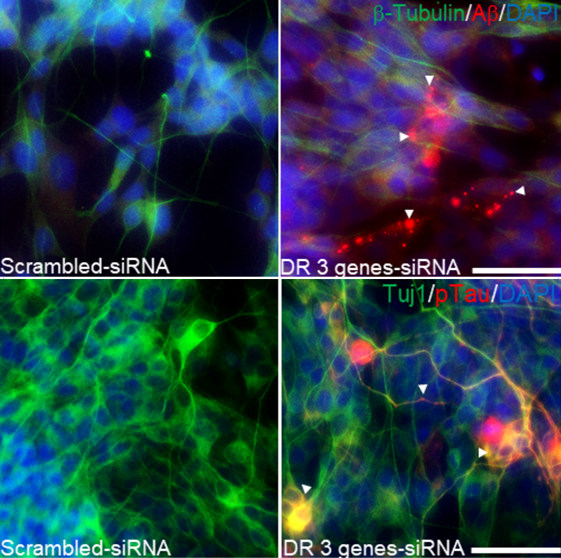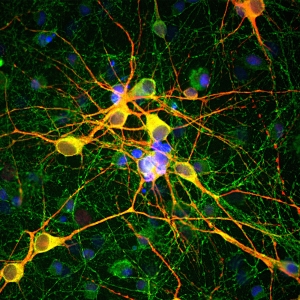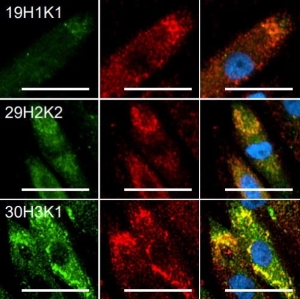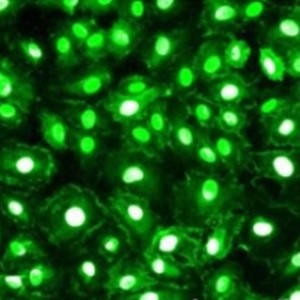A steady stream of results demonstrates that our human cells are both reliable and versatile. Another new publication featuring our human brain microvascular endothelial cells (HBMECs) (cat. HEC02) is proof positive.
Published this week, researchers used our HBMECs to explore potential treatment targets and mechanisms for brain aneurysms. Specifically, the study focused on the role of miR-139-5p in the pathogenesis of brain aneurysms. We encourage you to click here to check out the full publication.
Image: Immunofluorescence staining after overexpression and knockdown of FGB in HBMECs (Tao Jin, et al.)
This publication is just the most recent of many publications using these cells in a variety of research areas. Most recently in February, we highlighted a cerebral cavernous malformation (CCM) study using these same cells. Furthermore, they have also been published in COVID-19 and diabetes research in the last year alone. You can check out all publications using these cells here.
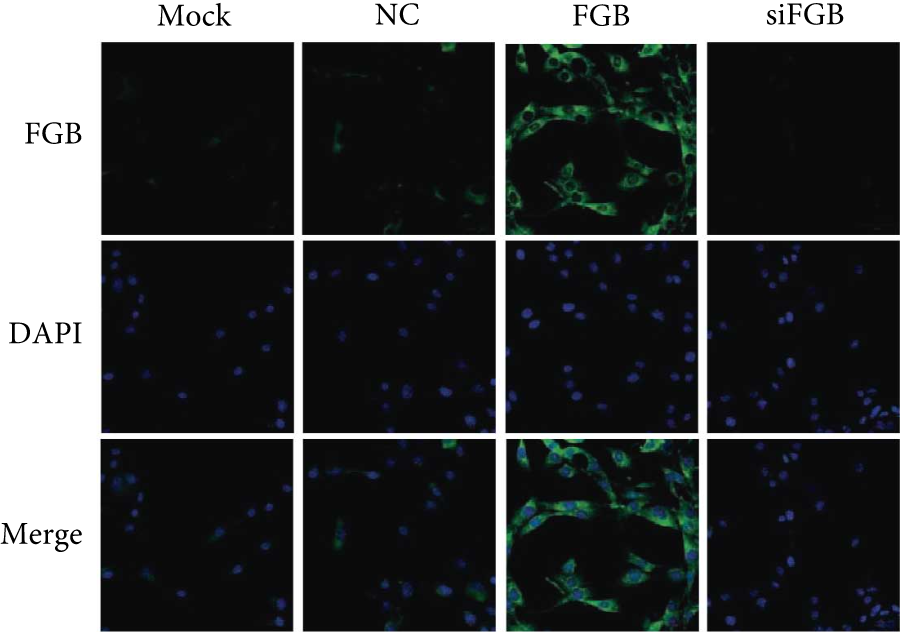
However, the versatility of our cells isn't unique to our endothelial cells. Many of our cell types are constantly popping up in research all over the place. Explore all human cell types we have available and their many references.
Image: Analysis of the effect of siRNA mediated individual or combined knockdown of the top 3 downregulated genes on the AD infectious etiology gene signature in primary human neurons (Wei-Bin Shen, et al).
Another stellar example are our primary human neurons (cat. HNC001), which have been quite busy this year. They were used to study the link between Alzheimer's and COVID-19 (learn more here). In a second recent publication, glioblastoma researchers used our neurons as a control for healthy neurons when looking at potential treatments to the destructive cancer.
Citation:
- Tao Jin, et al. (2022). miR-139-5p Suppresses Proliferation and Angiogenesis of Intracranial Aneurysm via FGB.Journal of Healthcare Engineering. doi: 10.1155/2022/5824327
- Wei-Bin Shen, et al. (2022). SARS-CoV-2 Invades Cognitive Centers of the Brain and Induces Alzheimer’s-Like Neuropathology. bioRxiv. doi: 10.1101/2022.01.31.478476
